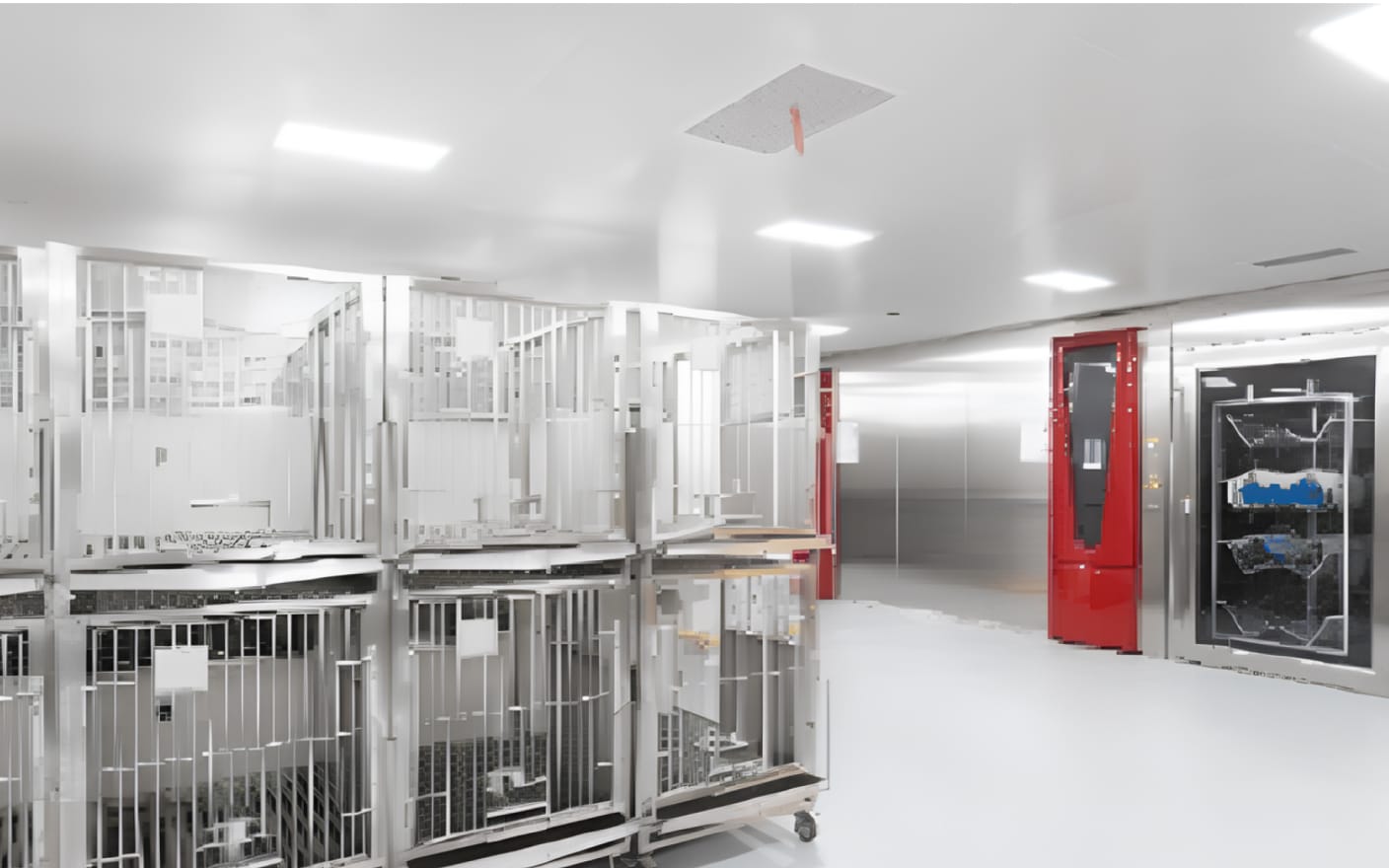The increasing prevalence of lead compounds, candidate compounds, and approved drugs featuring high hydrophobicity and low water solubility is becoming a notable trend. This is particularly true for new chemical entities, where the proportion of poorly soluble compounds may have seen an upswing. The low solubility of these compounds poses a significant challenge to their absorption in the intestinal tract, resulting in low systemic bioavailability. This creates a hurdle in accurately assessing the pharmacodynamics and toxicology of compounds with low water solubility in aqueous system designs.
Given the low probability of these compounds receiving approval, the optimization of formulations in preclinical pharmacokinetic studies necessitates meticulously crafted strategies and designs. Additionally, it is crucial to ensure the safety and tolerance of the formulation in laboratory animals during in vivo assays. The in vivo PK preclinical formulation team at WuXi AppTec, specializing in preclinical pharmacokinetic studies, has accumulated experience in strategies to enhance the solubility of poorly soluble compounds. They have also established a database of safe and tolerable excipients to support single and multiple-drug administration in multiple animal species. This article explores strategies for optimizing formulations in preclinical pharmacokinetic studies of poorly soluble compounds, with a focus on solvent selection and particle size reduction, to expedite the progress of drug development.
1. What are poorly soluble compounds and why are they prevalent?
The Biopharmaceutics Classification System (BCS) scientifically categorizes all drugs based on their solubility and permeability.3 It comprises four classes: high solubility and high permeability (Class I), low solubility and high permeability (Class II), high solubility and low permeability (Class III), and low solubility and low permeability (Class IV) (Figure 1). Class II and Class IV are poorly soluble drugs.

Figure 1. Biopharmaceutics classification system3
Poorly soluble Class II and Class IV drugs constitute approximately 90% of the NCE molecules (Figure 2).1 During preclinical study, most of the compounds exhibit insoluble characteristics so it is necessary to require preclinical formulation optimization for further pharmacokinetic studies.

Figure 2. The proportion of insoluble compounds of NCEs1
Chemists have proposed various hypotheses for this trend. The actual reasons are multifaceted. Chemists pursue high potency in compounds by modifying their structure. This, coupled with considerations of receptor binding, target and intracellular signaling channels, lipid architecture, and highly lipophilic endogenous ligands, increases the need for highly lipophilic, low water-soluble candidate compounds to access and interact with the target.
2. How to improve in vivo absorption of poorly soluble compounds?
The poor in vivo absorption of these compounds not only results in low oral bioavailability within the animal but also poses challenges in establishing a good linear relationship between exposure and dose in dose–range-finding trials. This situation complicates the conduct of pharmacokinetic studies and the initiation of Investigational New Drug (IND) trials. From a formulation perspective, there are three main approaches to address these challenges:
-
Selection of an appropriate solvent;
-
Particle size reduction to increase dissolution rate;
-
Application of novel formulations, such as solid dispersions, liposomes, and a self-emulsifying drug delivery system (SEDDS).
This article will primarily concentrate on the first two approaches, while Self-Emulsifying Drug Delivery Systems (SEDDS) will be discussed in a separate article.
3. Selecting appropriate solvents
Choosing and using a combination of solvents is crucial for enhancing drug solubility. Currently, there are five major categories of solvents used to increase solubility: pH modification, co-solvents, inclusion complex, surfactants, and lipids.
1) pH modification
As shown in Figure 3, 75% of drugs are basic and 20% are acidic 2. Most drug molecules are weak acids or weak bases that can be ionizable, it may be possible to achieve the target concentration through pH modification. Therefore, buffer solutions are widely used, such as citrate buffer, acetic acid buffer, or phosphate buffer solution (PBS). Different routes of administration have different pH constraints. Typically, the pH of orally administered formulations should be 2–11, with formulations of pH 4–8 being more common as a result of lower irritation. The pH for intravenous administration is narrowed to reduce vascular irritation and should be 3–9.

Figure 3. Percentage distribution of acidity and basicity of drugs2
2) Co-solvents
Co-solvents are water-miscible organic reagents and are usually used to enhance the solubility of low water-soluble compounds. The utility of co-solvents is based on the principle that different solvents have specific affinities for various structural aspects of chemical entities (Figure 4). This ensures that the compound with low aqueous solubility achieves maximum solubility at a certain ratio. Common co-solvents range from highly polar reagents like dimethyl sulfoxide (DMSO), N-methyl-2-pyrrolidone (NMP), dimethylacetamide (DMA), and ethanol, to weakly polar ones like low-molecular-weight polyethylene glycol (PEG), and propylene glycol (PG). Due to the safety profile of highly polar co-solvent reagents, 10 to 15% of U.S. Food and Drug Administration (FDA)-approved parenteral products incorporate co-solvents. These formulations not only substantially increase the solubility of certain drugs but also reduce the hydrolysis reactions of some drugs in the solution, enhancing their formulation stability. The use of co-solvents for solubility enhancement can meet solubility requirements by increasing the proportion of organic solvents. However, excessive use can lead to adverse reactions, so the quantity needs to be controlled within a certain range.

Figure 4. Action principle of co-solvents
3) Inclusion complex
As illustrated in Figure 5, Cyclodextrins (CDs) are widely employed for solubilizing poorly soluble drugs. Their distinctive cage-like structure forms host–guest molecular complexes, wherein non-polar drug molecules are enclosed within the non-polar cage structure. The polyhydroxy on the exterior of cyclodextrin exhibits a strong affinity for polar water molecules, leading to enhanced solubility. The most used derivatives of β-CD as solubilizers are hydroxypropyl-β-cyclodextrin (HP-β-CD) and sulfobutyl ether-β-cyclodextrin (SBE-β-CD). Their advantages include improving drug stability, water solubility, safety, reducing renal toxicity, mitigating drug hemolysis, controlling drug release rates, and masking unpleasant odors. Since the first drug was launched in 1976, the number of drug-CD formulations approved on the market may be over 100 products, which has been continuously growing.

Figure 5. The structure of hydroxypropyl -β-cyclodextrin (A is the molecular structure, B is the three-dimensional structure)
4) Surfactants
Surfactants are commonly used to solubilize poorly water-soluble compounds via compound incorporation into surfactant micelles, simultaneously increasing the stabilization of suspension formulations (Figure 6). In formulations containing proteins, surfactants can also decrease protein degradation. Traditional surfactants include Tween 80, polyoxyethylated castor oil, and so on. Newer surfactants, such as glyceride 44/14 and polyethylene glycol stearate 15 (Solutol HS-15), exhibit superior solubilization effects, biocompatibility, and safety compared to traditional surfactants. Therefore, Solutol HS-15 is commonly used as a replacement for Tween 80. An aspect that warrants further, it is the possibility that high surfactant concentrations have the potential to cause local or systemic adverse reactions after parenteral administration, such as hypersensitivity reactions.

Figure 6. The surfactant wraps the drug
5) Lipids
Lipids have been proven to be effective in aiding the dissolution of compounds with high lipid solubility, with common options including oils and caprylic/hydroxy decanoate triglycerides.

Figure 7. The lipids wrap drugs
Lipid-based drug delivery (LBDD) is a method that successfully enhances the solubility of lipophilic drugs in formulations. More importantly, it enables normal absorption and increasing bioavailability in the gastrointestinal tract. Commonly used lipids include Labrafac PG, Maisine® CC, and Transcutol® HP. Lipid excipients have been demonstrated to be applicable for BCS Class II drugs and show potential for Class III and IV drugs. They enhance the drug's solubility in the formulation, ensuring its dissolution in the gastrointestinal tract. Lipid excipients can be digested and absorbed in vivo, promoting the absorption of the drug. The collaborative effect of lipid excipients facilitates the absorption of the drug, and the digestion process of lipid excipients helps maintain the drug in a dissolved state (Figure 7 and Figure 8). Lipid excipients dissolve the drug in the formulation, facilitating the entry of the drug into the body, and crucially, maintaining its dissolved state even after exposure to the aqueous system.
For lipid excipient prescription, the enhancement of drug bioavailability involves the use of medium-chain length oils (C <12), which facilitates drug permeation through the intestinal epithelium, directly diffusing into the bloodstream. Unsaturated oils with long chains (C≥12) stimulate chylomicron secretion, increasing drug absorption through the lymphatic pathway, and avoiding the first-pass effect in the liver.
Currently, the hotspot formulation SEDDS used for lipophilic compounds, the combination of different ratios of solubilizers/surfactants/oil esters, the tolerance of different animal species, routes of administration, food, and other variables, as well as in vitro simulation testing evaluation methods, all have preclinical formulation screening decision trees and successful application cases.4

Figure 8. Schematic representation of the mechanisms of absorption of poorly water-soluble drugs from lipid-based formulations (LBF). The schematic includes how LBF promotes the absorption or bioavailability of poorly water-soluble drugs.
The rational utilization of the five major classes of combination solvents mentioned above can effectively enhance drug solubility and avoid the possibility of compound precipitation after administration. Co-solvents, cyclodextrins, and surfactants are the most used and can be combined with pH modification for a markedly improved solubilization effect.
4. Reduce particle size to enhance dissolution rate
Reducing the particle size of a compound, thereby increasing its specific surface area (the total surface area per unit mass of material), can enhance the dissolution rate of poorly water-soluble compounds (Figure 9). The dissolution rate refers to the amount of drug that dissolves into the solution per unit of time at a certain temperature. The dissolution rate is determined by the gravitational forces between the solvent and solute molecules and the diffusion rate of solute molecules in the solvent. Decreasing the particle size of solid drugs, thereby increasing the specific surface area, enhances the interaction between the drug and the solvent, leading to increased solubility. Therefore, obtaining micronization or nanoscale formulations through size reduction can improve the bioavailability of poorly water-soluble compounds. Commonly used methods for particle size reduction include mortar grinding, ultrasonic fragmentation, ultra-high-speed homogenization, and ball milling.

Figure 9. The particle size decreases and the specific surface area increases
Traditionally, small particles are obtained through top-down methods, such as mortar grinding, ultrasonic fragmentation, and ultra-high-speed homogenization, which yield micrometer-sized particles with diameters of 1–10 μm, a process known as micronization (Figure 10 and Figure 12). With technological advancements and the widespread use of stabilizers, ball milling can produce even smaller nanoparticles, typically 200–500 nm (Figure 10).

Figure 10. Cell disruption (A) and high-speed homogenization (B) yield micrometer-sized particles with diameters of 1–10 μm; (C) 200–500 nm can be produced by ball milling
Accurate measurement of particle size can be achieved using a polarization microscope, and the particle size distribution of nanoscale formulations can be assessed effectively using a size distribution analyzer, providing valuable insights into the quality of the formulation (Figure 11).

Figure 11. (A) polarizing microscope, (B) particle size analyzer

Figure 12. Polarizing microscope and particle size distribution detection result
Conclusion
The preclinical pharmacokinetics in vivo PK preclinical formulation team of WuXi AppTec DMPK, after more than a decade of application, has compiled data on thousands of solvent-tolerance combinations for animal experiments, creating a preclinical animal experiment-solvent combination database. This database allows for the rapid design of animal-tolerant solvent formulations within a single working day, considering compound properties, animal species, administration, and dosing volumes. Based on in vitro simulation assay and formulation stability and solubility parameters, the optimal solvent combination can be chosen for animal experiments.
Talk to a WuXi AppTec expert today to get the support you need to achieve your drug development goals.
Authors: Yu Chen, Chao Zhang, Shoutao Liu
Committed to accelerating drug discovery and development, we offer a full range of discovery screening, preclinical development, clinical drug metabolism, and pharmacokinetic (DMPK) platforms and services. With research facilities in the United States (New Jersey) and China (Shanghai, Suzhou, Nanjing, and Nantong), 1,000+ scientists, and over fifteen years of experience in Investigational New Drug (IND) application, our DMPK team at WuXi AppTec are serving 1,500+ global clients, and have successfully supported 1,200+ IND applications.
Reference
1. M. Sherry Ku. Use of the Biopharmaceutical Classification System in Early Drug Development. The AAPS Journal. 10 (1): 208-212(2008).
2. Edward H.Kearns, Dili. Translated by Zhong Dafang et al. Nature of drug class. Concepts, structural design, and methodology. From ADME to Security Optimization. Beijing. Science Press, 2011.
3. Hywel D. Williams, Natalie L, Trevaskis, Susan A. Charman, Ravi M Shanker, William N. Charman, Colin W. Pouton, and Christopher J.H. Porter. Strategies to Address Low Drug Solubility in Discovery and Development. PHARMACOLOGICAL REVIEWS 321-418(2013).
4. Gintare Leonaviciute & Andreas Bernkop-Schnurch. Self-emulsifying drug delivery systems in oral(poly)peptide drug delivery. Expert Opin Drug Deliv REVIEWS (2015).
Related Services and Platforms




Stay Connected
Keep up with the latest news and insights.











